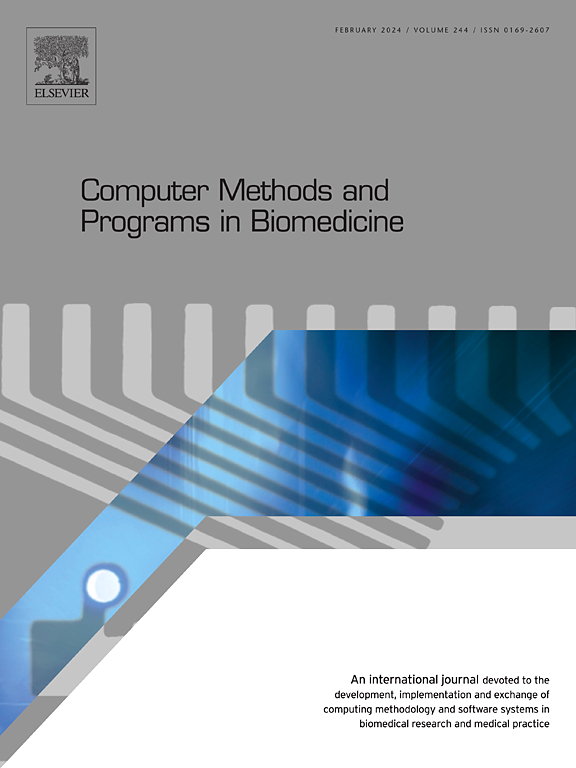Multiscale feature enhanced gating network for atrial fibrillation detection
IF 4.9
2区 医学
Q1 COMPUTER SCIENCE, INTERDISCIPLINARY APPLICATIONS
引用次数: 0
Abstract
Background and Objective
Atrial fibrillation (AF) is a significant cause of life-threatening heart disease due to its potential to lead to stroke and heart failure. Although deep learning-assisted diagnosis of AF based on ECG holds significance in clinical settings, it remains unsatisfactory due to insufficient consideration of noise and redundant features. In this work, we propose a novel multiscale feature-enhanced gating network (MFEG Net) for AF diagnosis.
Method
The network integrates multiscale convolution, adaptive feature enhancement (FE), and dynamic temporal processing. The multiscale convolution helps capture global and local information. The FE module consists of a soft-threshold residual shrinkage component, a dilated convolution module, and a Squeeze-and-Excitation (SE) module, eliminating redundant features and emphasizing effective features. The design allows the network to focus on the most relevant AF features, thereby enhancing its robustness and accuracy in the presence of noise and irrelevant information. The dynamic temporal module helps the network learn and recognize the time dependence associated with AF. The novel design endows the model with excellent robustness to cope with random noise in real-world environments.
Result
Compared with the state-of-the-art methods, our model exhibits excellent classification performance with an accuracy of 0.930, an F1 score of 0.883, and remarkable resilience to noise interference on the PhysioNet Challenge 2017 dataset. Moreover, the model was trained on the CinC2017 database and validated on the CPSC2018 database and AFDB database, achieving accuracies of 0.908 and 0.938, respectively.
Conclusion
The excellent classification performance of MFEG Net, coupled with its robustness in processing noisy electrocardiogram signals, makes it a powerful method for automatic atrial fibrillation detection. This method has made significant progress over state-of-the-art methods and may alleviate the burden of manual diagnosis for clinical doctors.
求助全文
约1分钟内获得全文
求助全文
来源期刊

Computer methods and programs in biomedicine
工程技术-工程:生物医学
CiteScore
12.30
自引率
6.60%
发文量
601
审稿时长
135 days
期刊介绍:
To encourage the development of formal computing methods, and their application in biomedical research and medical practice, by illustration of fundamental principles in biomedical informatics research; to stimulate basic research into application software design; to report the state of research of biomedical information processing projects; to report new computer methodologies applied in biomedical areas; the eventual distribution of demonstrable software to avoid duplication of effort; to provide a forum for discussion and improvement of existing software; to optimize contact between national organizations and regional user groups by promoting an international exchange of information on formal methods, standards and software in biomedicine.
Computer Methods and Programs in Biomedicine covers computing methodology and software systems derived from computing science for implementation in all aspects of biomedical research and medical practice. It is designed to serve: biochemists; biologists; geneticists; immunologists; neuroscientists; pharmacologists; toxicologists; clinicians; epidemiologists; psychiatrists; psychologists; cardiologists; chemists; (radio)physicists; computer scientists; programmers and systems analysts; biomedical, clinical, electrical and other engineers; teachers of medical informatics and users of educational software.
 求助内容:
求助内容: 应助结果提醒方式:
应助结果提醒方式:


